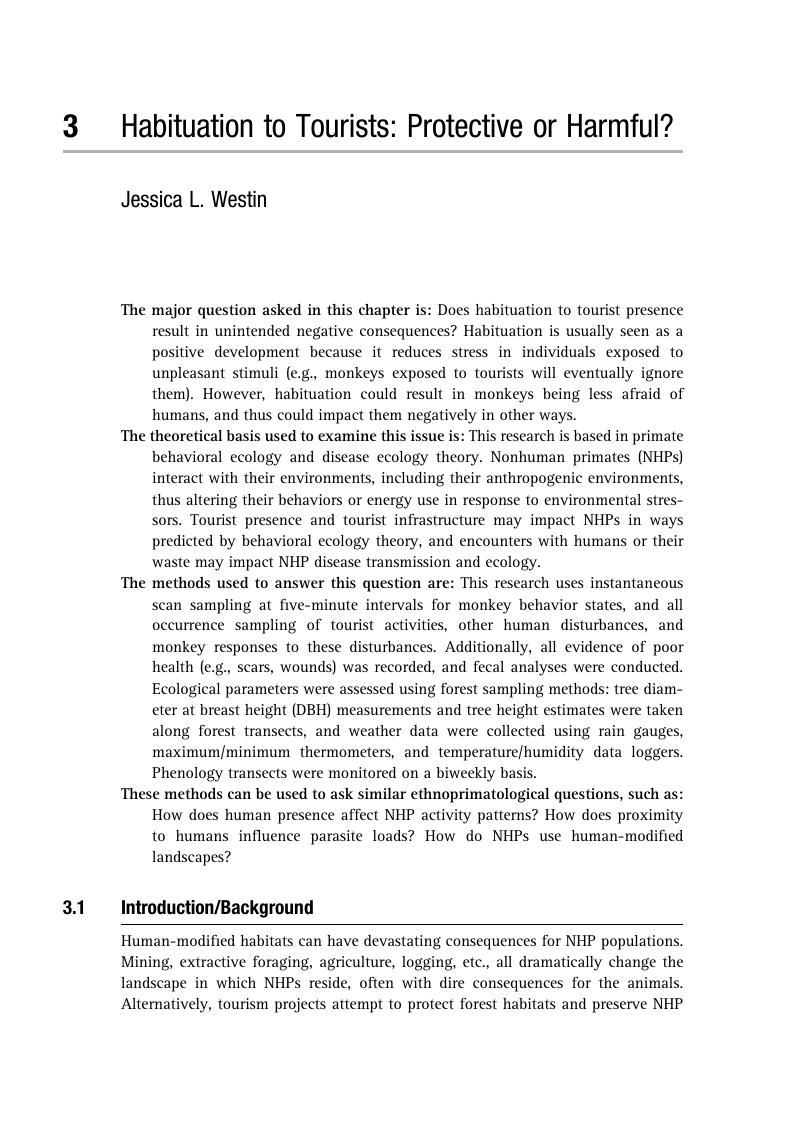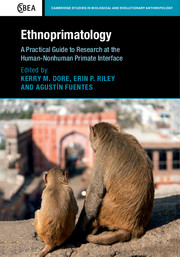Book contents
- EthnoprimatologyA Practical Guide to Research at the Human–Nonhuman Primate Interface
- Cambridge Studies in Biological and Evolutionary Anthropology
- Ethnoprimatology
- Copyright page
- Contents
- Contributors
- Methods
- 1 Introduction: Doing Ethnoprimatology in the Anthropocene
- Part I Characterizing the Interface
- 2 Introduction to Part I
- Section I Behavioral Ecology
- 3 Habituation to Tourists: Protective or Harmful?
- 4 Assessing the Role of Exotic and Ornamental Plants in the Ecology of Gray Mouse Lemurs (Microcebus murinus) in Southeastern Madagascar
- 5 The Looming Legacy of Deforestation for Red Colobus Monkeys in Kibale National Park
- 6 Food, Feeding, and Foraging: Using Stable Isotope Analysis as a Methodology in the Study of Urban Primate Dietary Patterns
- 7 Measuring Movement: How Remote Telemetry Facilitates Our Understanding of the Human–Macaque Interface
- Section II Epidemiological Studies
- Section III Predator–Prey Studies
- Section IV Human–Primate Conflict
- Part II Following the Data: Incorporating Ethnography
- Part III Implications for Conservation
- Index
- References
3 - Habituation to Tourists: Protective or Harmful?
from Section I - Behavioral Ecology
Published online by Cambridge University Press: 16 February 2017
- EthnoprimatologyA Practical Guide to Research at the Human–Nonhuman Primate Interface
- Cambridge Studies in Biological and Evolutionary Anthropology
- Ethnoprimatology
- Copyright page
- Contents
- Contributors
- Methods
- 1 Introduction: Doing Ethnoprimatology in the Anthropocene
- Part I Characterizing the Interface
- 2 Introduction to Part I
- Section I Behavioral Ecology
- 3 Habituation to Tourists: Protective or Harmful?
- 4 Assessing the Role of Exotic and Ornamental Plants in the Ecology of Gray Mouse Lemurs (Microcebus murinus) in Southeastern Madagascar
- 5 The Looming Legacy of Deforestation for Red Colobus Monkeys in Kibale National Park
- 6 Food, Feeding, and Foraging: Using Stable Isotope Analysis as a Methodology in the Study of Urban Primate Dietary Patterns
- 7 Measuring Movement: How Remote Telemetry Facilitates Our Understanding of the Human–Macaque Interface
- Section II Epidemiological Studies
- Section III Predator–Prey Studies
- Section IV Human–Primate Conflict
- Part II Following the Data: Incorporating Ethnography
- Part III Implications for Conservation
- Index
- References
Summary

- Type
- Chapter
- Information
- EthnoprimatologyA Practical Guide to Research at the Human-Nonhuman Primate Interface, pp. 15 - 28Publisher: Cambridge University PressPrint publication year: 2017
References
- 7
- Cited by

